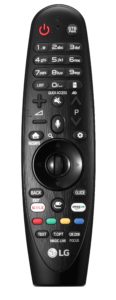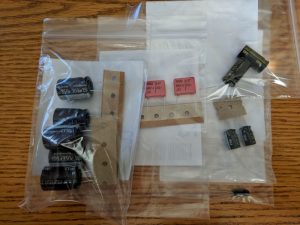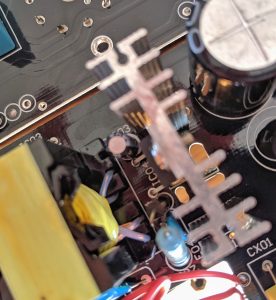 I lucked into a good deal on a lightly used Martin Logan Motion Vision soundbar. The flaw in my new LG TV is that the digital output is constant, not variable via the remote control. I did not want the soundbar in this application to require an extra remote and a list of instructions for others to operate. I considered a universal remote, but, the Magic Remote offers a cursor mode that is most helpful. Plus, it also works wirelessly. More on that shortly.
I lucked into a good deal on a lightly used Martin Logan Motion Vision soundbar. The flaw in my new LG TV is that the digital output is constant, not variable via the remote control. I did not want the soundbar in this application to require an extra remote and a list of instructions for others to operate. I considered a universal remote, but, the Magic Remote offers a cursor mode that is most helpful. Plus, it also works wirelessly. More on that shortly.
The soundbar has a learning mode–you can teach it the IR signals from your remote. I went to the task of setting the volume and mute buttons, and it seemed to work OK. Yet I was trying to adjust the volume and nothing was happening on the soundbar. I tried programming again when the TV was on but this time the learning commands failed.
I soon realized that LG’s Magic Remote operates in IR mode when the TV is off, but goes into wireless mode when the TV is on. Was there a way to disable the wireless mode on the remote? None that I could find.
Digging around on Google, I finally located a possible solution via the AVSForum–there was a way this forum member had accessed a menu on his LG OLED TV to add a soundbar. I had no such menu.
Or rather…I actually did have such a menu. LG hides this behind the “STB PWR” button, which is for using a set top box (like you would get from a cable company). When you press this button, the TV goes into a setup mode where you can pick various peripherals to set up, including soundbars.
Since there is no support for the Martin Logan soundbar, the trick here is to pick any of the listed soundbars, but then go back to the learn mode on the soundbar and have it learn the remote’s IR signals. The act of choosing the external soundbar sets the remote into IR mode for the volume and mute buttons. Once I did that and programmed the remote, we now have remote volume control! The soundbar has a function where it will turn on when it receives a signal from the TV via the optical digital input, so even the power is being handled.
The only drawback is that the remote is glacial in its volume adjustment speed–it ticks up or down at about two levels per second, and the soundbar has 100 possible levels. Thankfully I don’t tweak the volume too often.
 What really struck me early on, though, was how terrible Chicago II sounded. Even back when I had crappy sounding Realistic stereo equipment, Chicago II made it sound worse than even those all-in-one stereos that were everywhere back then. Tweeters apparently aren’t even needed to listen to that sonic trainwreck–it’s that bad. That to me was a huge turn-off.
What really struck me early on, though, was how terrible Chicago II sounded. Even back when I had crappy sounding Realistic stereo equipment, Chicago II made it sound worse than even those all-in-one stereos that were everywhere back then. Tweeters apparently aren’t even needed to listen to that sonic trainwreck–it’s that bad. That to me was a huge turn-off. I replaced my WDTV with a Nexus Player, essentially a Google/Android TV appliance. It worked OK on some media, and it was simple to side load apps so that I could add more functionality. But, the rather limited processing power and a somewhat finicky WiFi radio made it rather choppy. After adding my HDHomeRun tuner, it would be rare that a program could play without breaking up.
I replaced my WDTV with a Nexus Player, essentially a Google/Android TV appliance. It worked OK on some media, and it was simple to side load apps so that I could add more functionality. But, the rather limited processing power and a somewhat finicky WiFi radio made it rather choppy. After adding my HDHomeRun tuner, it would be rare that a program could play without breaking up.
